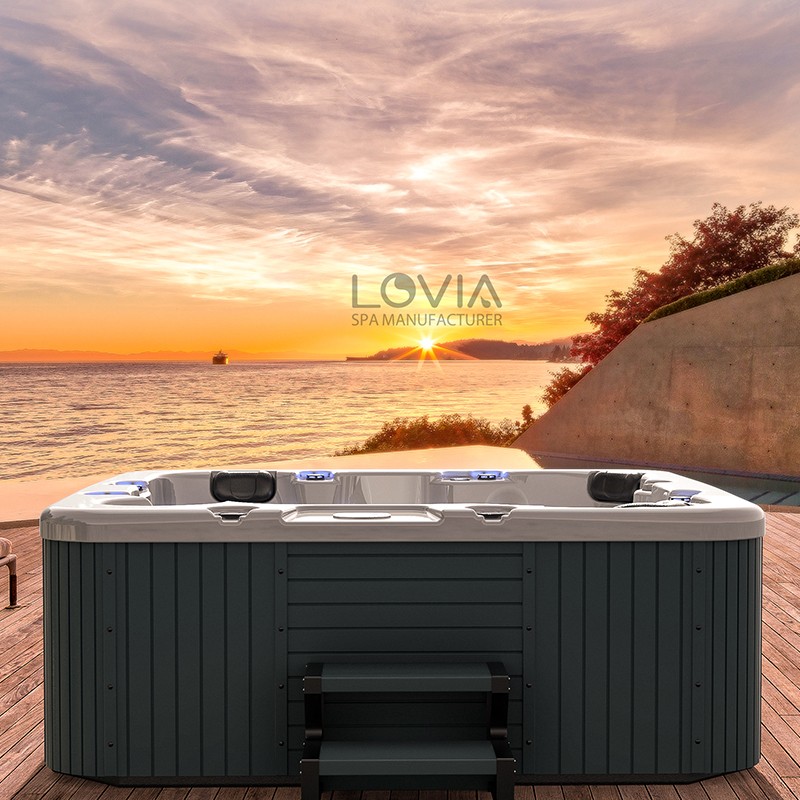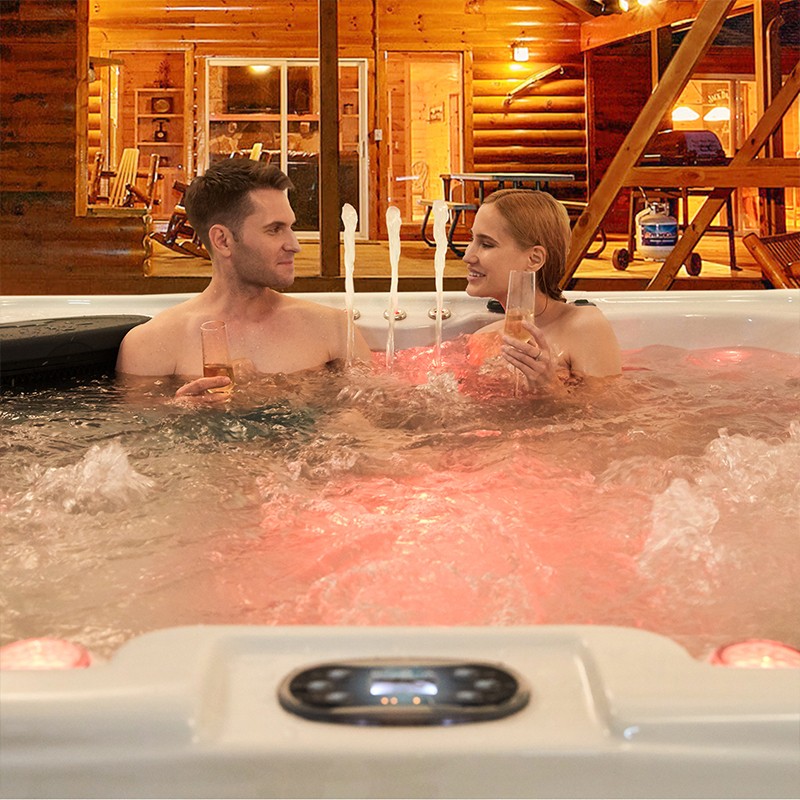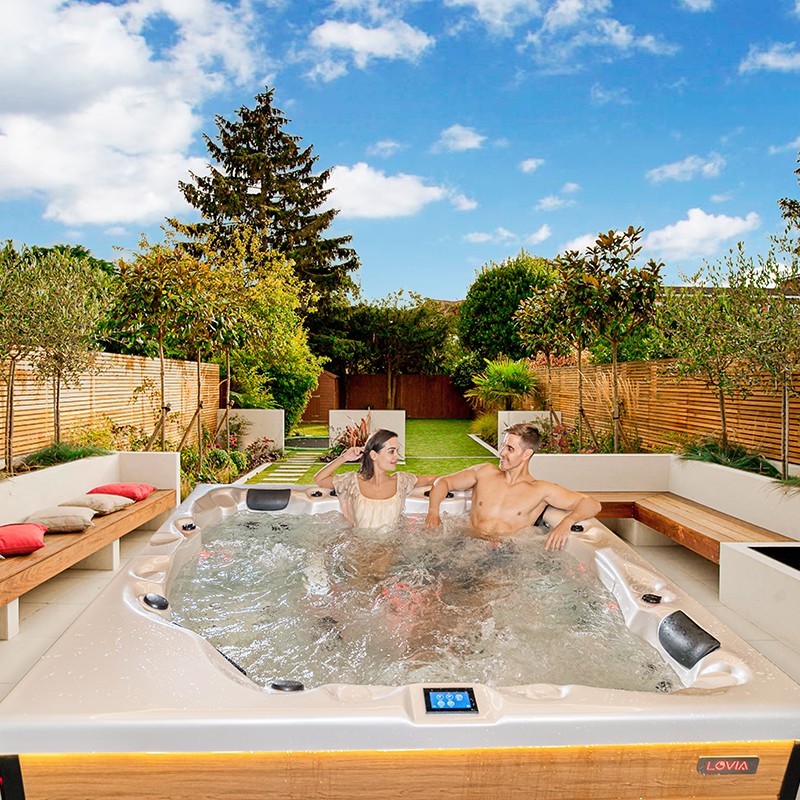
Hot and cold water therapy for the everyday athlete
2024-11-23 15:30In modern sports training and rehabilitation, hot and cold water therapy is increasingly becoming a part of the daily routine of many athletes and fitness enthusiasts. This method is not only to relieve fatigue, but also a scientific rehabilitation method designed to help the body recover faster from high-intensity exercise, enhance muscle performance, and reduce the risk of injury. Hot and cold hydrotherapy has become an essential skill for many athletes due to its simplicity, ease of execution and dramatic results.
This article will delve into the principles, functions, and multiple benefits of hot and cold water therapy for athletes to help you fully understand this powerful tool for recovery.

What is cold water hydrotherapy?
Cold Water Therapy, also commonly known as cold therapy, is the use of cold or ice water to soak part of the body or the entire body to help reduce inflammation, relieve muscle soreness and promote recovery. Cold water therapy can be delivered in many forms, including ice baths, cold showers, cold compresses, and more. The core principle is that cold water constricts blood vessels and reduces blood flow to injured or fatigued areas, thereby reducing swelling and inflammation. At the same time, cold water can also numb nerve endings and reduce the feeling of pain.
Cold water therapy is widely used in the recovery period after exercise, especially after high-intensity training or competition. Athletes often use cold water therapy to relieve muscle fatigue and tension. Ice baths are one of the most common cold water therapies and are usually performed immediately after exercise to help speed up the body's recovery by soaking in cold water at 4 to 15 degrees Celsius for about 10 to 15 minutes.
What is hot water therapy?
Hot Water Therapy, also known as hyperthermia, is a healing method that uses the warming effect of hot water to promote blood circulation, relax muscles, and relieve pain. Contrary to cold water therapy, hot water therapy increases local blood flow by dilating blood vessels, promoting metabolism and speeding up the repair of damaged tissue.
Forms of hot water therapy include hot water baths, hot compresses, steam baths, etc. Many athletes use hot water therapy before or after training to help muscles relax, reduce stiffness and improve flexibility. Hot baths are usually performed in water between 38 and 40 degrees Celsius, with a soaking time of 15 to 30 minutes, depending on individual tolerance and desired effects.
Hot water therapy can also have a psychologically relaxing effect, helping to reduce stress and anxiety, and has a positive effect on maintaining the mental health of athletes.

Cold water hydrotherapy aids performance and muscle recovery
Cold water hydrotherapy is highly regarded for its ability to quickly reduce inflammation and relieve muscle soreness after exercise. Post-exercise muscle soreness is often caused by tiny tears in the muscle fibers, along with a localized inflammatory response. Cold water hydrotherapy reduces local blood flow by constricting blood vessels, thereby reducing the occurrence of inflammatory reactions. In addition, the low temperature environment of cold water can also inhibit nerve conduction speed and reduce pain, allowing athletes to recover faster and carry out the next round of training.
Some studies show that cold water hydrotherapy can significantly reduce post-exercise muscle soreness (DOMS) and help athletes maintain high levels of performance. For example, football players use cold water baths after intense games to reduce swelling and pain in their lower limbs and maintain leg flexibility and strength. At the same time, cold water therapy can also improve athletes' mental alertness and help them react quickly during competitions.
Cold water hydrotherapy is particularly beneficial for athletes who perform endurance sports. Prolonged running or cycling can lead to muscle overuse and micro-trauma, and cold water therapy can help these athletes recover in a short time and reduce the negative effects of muscle fatigue.
Hot water therapy soothes and helps muscles
Unlike cold water hydrotherapy, hot water hydrotherapy is more suitable for use before exercise or after low-intensity exercise to relax muscles and promote blood circulation. Hot water can dilate blood vessels and increase blood flow, thereby accelerating the supply of oxygen and nutrients to the muscles and speeding up the discharge of metabolic waste. This effect makes hot water therapy excellent at relieving muscle stiffness and tension.
Hot water therapy can prevent sports injuries when used before exercise. Through hot baths or hot compresses, athletes' muscles and joints can enter a more relaxed state in advance, thereby reducing sprains or strains caused by muscle stiffness or inflexibility. In addition, hot water therapy has a significant effect on relieving chronic pain, arthritis and other symptoms, making it a part of the daily rehabilitation training of many athletes.
In terms of mental relaxation, the effect of hot water therapy cannot be ignored. The warm water temperature can relieve mental tension and anxiety, help athletes relax and improve sleep quality after competition or training, thereby improving overall health.
Cold Water Hydrotherapy Vs. Hot Water Hydrotherapy: Which Is Best?
Hot and cold hydrotherapy each have unique advantages, and deciding which is best depends on the individual needs of the athlete and the specific situation. Cold water hydrotherapy is better used after high-intensity exercise to help reduce inflammation, relieve muscle soreness and promote rapid recovery. Hot water therapy is more suitable for use before exercise to help relax muscles, improve flexibility and prevent injuries.
For athletes who regularly perform high-intensity sports, cold water hydrotherapy is an important means of maintaining performance and reducing injuries. Conversely, if you engage in low-impact exercise or need to relieve chronic muscle tension and pain, hot water therapy may be more appropriate.
However, it’s important to note that the effects of cold and hot water therapy vary from person to person. Some athletes may tolerate cold water better, while others may prefer the comfort of hot water. Therefore, it is crucial to find a spa treatment that works for you.
What kind of hydrotherapy should I use?
Which type of hydrotherapy you choose depends on your type of exercise, intensity and specific goals. If you've just completed an intense training session or race, cold water hydrotherapy may be the best option to help you recover quickly. If your training intensity is low, or you feel tired and have tight muscles after training, hot water therapy is a better choice. Hot water can help relax your muscles, relieve stress, and prepare you for the next training session. If you have a training or competition coming up, hot water therapy can help relax your muscles in advance and prevent injury.
But some people aren't comfortable with the cold temperatures of cold water, while others find hot water can make them feel tired. Understand your body's reactions and choose the hydrotherapy treatment that works best for you. Additionally, if your main goal is to reduce inflammation and pain, cold water therapy may be more effective. If you need to relax and relieve chronic muscle tension, hot water therapy is more suitable.
In many cases, a combination of hot and cold water therapies (such as alternating hot and cold baths) may provide better results. The alternate use of hot and cold water can promote the expansion and contraction of blood vessels, thereby improving blood circulation and metabolism, and helping to speed up recovery.

Can hot water hydrotherapy and cold water hydrotherapy be used together?
Hot and cold hydrotherapy can be used in combination for better recovery results. This method, known as contrast water therapy, works by alternating cold and hot water to increase blood circulation and speed up the recovery process. The basic principle of contrast water therapy is to use cold water to shrink blood vessels, reduce swelling and inflammation, and then use hot water to expand blood vessels, speeding up blood flow and oxygen supply. This alternating process can help the body eliminate metabolic waste faster, reduce muscle soreness, and speed up recovery.
A common method of contrasting water therapy is to soak in cold water for 1-2 minutes, immediately enter hot water and soak for 3-5 minutes, and then repeat this process 3-5 times. This method can significantly improve blood circulation by promoting the expansion and contraction of blood vessels, help remove metabolic waste, and reduce inflammation and pain.
Contrast water therapy can also enhance the body's adaptability by stimulating the sympathetic nervous system, allowing athletes to better respond to environmental changes and physical stress. This comprehensive recovery method is ideal for use after high-intensity competition or training, helping to fully restore physical function.
What are the benefits of regular hydrotherapy?
Regular hot and cold water therapy has multiple benefits for athlete health and performance:
● Improved recovery: By reducing muscle soreness and inflammation, regular use of water therapy can help athletes recover faster and shorten training intervals. This ability to recover quickly is particularly important for maintaining high levels of athletic performance, especially after intense training or competition.
● Enhance blood circulation: hot and cold water therapy promotes blood flow, improves the delivery of oxygen and nutrients, and accelerates the discharge of metabolic waste. Improved blood circulation not only aids in muscle repair, but also improves overall physical health and function.
● Relieve muscle tension: Regular hot water therapy can help relax muscles and reduce muscle tension and stiffness. For long-term muscle tension and chronic pain, hot water therapy can provide effective relief.
● Reduce the risk of injury: Hot and cold water therapy can help prevent common injuries in sports, such as strains, sprains, and more by reducing inflammation, speeding recovery, and increasing flexibility. This is crucial for athletes to maintain a long-term athletic program.
● Improves mental health: Not only are spa treatments good for the body, they can also have a positive impact on mental health. By relieving tension and anxiety and improving sleep quality, hydrotherapy can help athletes maintain a good mental state, thereby improving overall performance.

Can I have a spa treatment every day?
Whether you can do hydrotherapy every day depends on your physical condition, the intensity of your training, and the type of hydrotherapy. Moderate daily hydrotherapy is safe for most athletes, especially when combined with a low-intensity recovery program.
Daily cold water hydrotherapy may be helpful for athletes who frequently train at high intensity, helping them maintain a high training frequency and reduce the risk of injury. However, excessive cold water therapy may cause stress to the body. It is recommended to use cold water therapy after high-intensity training, and 2 to 3 times a week is enough. Overuse may affect the body's natural regulatory mechanisms, so frequency needs to be adjusted to an individual's ability to adapt.
Hot water therapy is relatively suitable for daily use, especially as a means of relaxation and recovery. Not only does it aid in muscle recovery, it also promotes overall health by relieving mental stress. However, care should be taken that the water temperature is not too high to avoid unnecessary irritation to the skin. Moderate use can help maintain muscle flexibility and relaxation.
If you decide to have a spa treatment every day, it is recommended to choose a suitable spa method and duration based on your personal needs and body response. Listen to your body's feedback and reduce the frequency of hydrotherapy if you experience discomfort to avoid overstimulation.
